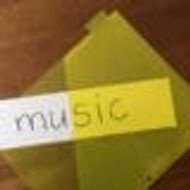Teaching Syllable Division for the V/CV & VC/V Patterns
Posted by Tammi Brandon on 9th Aug 2017
Welcome to Multisensory Monday! The V/CV and VC/V syllable division pattern is a difficult, yet essential skill, in the decoding process. Today Tammi Brandon shares a great activity to help encourage students to try both options when decoding.
What are the V/CV & VC/V Patterns?
Learning the V/CV and VC/V patterns is essential for understanding syllable division and reading more complex words. These patterns help students break down words into manageable parts, making it easier to decode and pronounce them correctly.
V/CV Pattern
The V/CV pattern involves dividing a word between a vowel and a consonant followed by another vowel. This pattern typically results in an open syllable, where the first vowel is pronounced with a long sound.
Examples:
- Tiger: The division is between the "i" and the "g," making it ti-ger. The first syllable "ti" is an open syllable, giving the "i" a long sound.
- Silent: The division is between the "i" and the "l," resulting in si-lent. Again, the first syllable "si" is open, with the long "i" sound.
VC/V Pattern (Vowel/Consonant/Vowel)
In the VC/V pattern, the division occurs after the consonant following the first vowel, resulting in a closed syllable. This means the first vowel is usually pronounced with a short sound.
Examples:
- River: The division is between the "v" and the "e," making it riv-er. The first syllable "riv" is closed, giving the "i" a short sound.
- Habit: The division is between the "b" and the "i," resulting in hab-it. The first syllable "hab" is closed, with a short "a" sound.
The Role of Syllable Division in Reading & Spelling
Understanding syllable division patterns is important for both reading and spelling development. Recognizing patterns like V/CV and VC/V helps students break down words into manageable parts, improving their ability to decode unfamiliar words and spell accurately. When students learn to divide words into syllables, they enhance their phonological awareness.
Syllable division supports reading fluency by allowing students to decode words more efficiently, freeing up cognitive resources for comprehension. In spelling, syllable division helps students recognize common patterns and apply spelling rules.
By breaking words into syllables, students can better memorize and recall spellings, especially for complex words. This skill not only supports literacy development but also builds students' confidence in their reading and spelling abilities.
VCV Teaching Activity
Once students have mastered V/CV syllable division and VC/V syllable division in isolation, they are invited to “play” with the words and decide if a word uses the V/CV or the VC/V syllable division pattern. To encourage students to try both options, I like to use a page divider that I found among my pile of office supplies. It is a yellow-colored, transparent, pocket folder that serves to divide pages in a binder…and syllables in a word.
Simply make a word card with a VCV word on it. The student inserts the word into the pocket of the transparent folder so that it shows the V/CV division pattern. The student should now read the word with the first syllable having an open or long vowel sound. In this case “mu…sic”.
Students should continue this activity for several words, trying and pronouncing both choices. For this next choice, students would read “ra…bid” with a long A sound in the first syllable and then “rab…id” with the short A sound in the first syllable.
As students progress and become more confident reading words with both patterns, you can transfer this activity from a larger motor skill to a smaller motor skill by moving the activity to the colored tab on the edge of a page divider. In this example, students would read the word as “ro…bot” (long O) and “rob…ot” (short O).
This activity is inexpensive and simple to create. In the classroom, it could easily be set up as a Center Activity. Teachers can use this in a small group, too, giving each group member his/her own word pile and colored divider, offering individual feedback as needed.
VCV Words
Here are some more VCV words to start with for this activity:
V/CV Words:
- Vocal
- Pilot
- Pupil
- Halo
- Tidal
VC/V Words:
- Magic
- Comic
- Camel
- Panic
- Lemon
Tammi Brandon, M.Ed., CDP
Tammi Brandon is a Master Instructor and Education Consultant with Brainspring Educator Academy.






